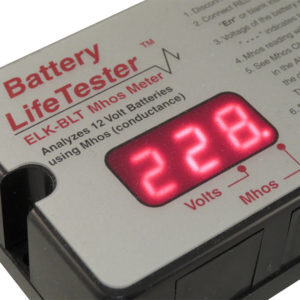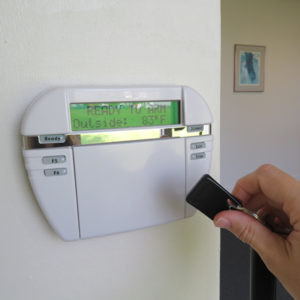
The ELK M1 and E27 Alarm Engine are known for their robust, reliable, and flexible automation and security solutions. However, as projects grow in scale or require extended communication distances, traditional copper wiring can face limitations in range and are suseptible to power surges from lightning. Enter the Comnet FDX60 fiber optic solution, a game-changer for installers seeking enhanced performance and flexibility.
What is the Comnet FDX60?
The Comnet FDX60 is a fiber optic communication extender designed to support a wide range of data communication needs. By converting the ELK M1 or E27 RS485 data bus signals into optical signals, the FDX60 enables these systems to operate over long distances via a single fiber, multimode cable while maintaining reliable communication.
Key Benefits of Using the FDX60 with the ELK M1 or E27
Electrical Isolation
Unlike copper wires, which can conduct electrical surges caused by lightning strikes, fiber optic cables are made of non-conductive materials (glass or plastic). This makes them immune to power surges, effectively preventing lightning-induced damage to connected devices and ensuring the reliability of the ELK M1 or E27 system, even in storm-prone areas.
Extended Communication Range
The ELK data bus over copper wiring has inherent distance limitations. The FDX60 allows the data bus to be transmitted over fiber optic cable, significantly increasing the maximum range—up to 2 miles. This is ideal for large facilities, multi-building campuses, or remote installations.
Improved Scalability
The ability to run the ELK M1 or E27 data bus over fiber enables installers to handle large-scale installations without compromising performance. For managing multiple structures in residential or commercial installations, the FDX60 offers the scalability to meet growing project demands.
Cost-Effective for Long-Term Use
While the initial installation of fiber optic systems may be higher than copper, the longevity, reduced maintenance, and superior performance of fiber make it a cost-effective choice for long-term applications. Immunity to power surges reduces repair and replacement costs for equipment, enhancing the long-term cost-effectiveness of fiber optic installations.
Superior Signal Integrity
Fiber optic cabling is immune to electromagnetic interference (EMI) and radio frequency interference (RFI). Whether installed in industrial environments or near high-powered machinery, the FDX60 ensures clean, uninterrupted data communication between the ELK panel and its peripherals.
Simplified Integration
The FDX60 is designed for easy integration with the ELK M1 and E27 systems. Its straightforward setup ensures minimal disruption, and its compatibility ensures reliable performance.
How the Comnet FDX60 Works: A Two-Unit Fiber Optic Solution
The Comnet FDX60 operates as a point-to-point fiber optic communication bridge, with a transmitter/receiver unit at each end of the fiber link. These units convert data bus signals from the ELK M1 or E27 system into optical signals, transmit them over fiber, and then reconvert the signals back to electrical form for the connected devices. An "A" version transciever unit is installed at the panel end, while a "B" version transceiver unit is installed at the remote end.

Key Components:
- FDX60 Local Unit (FDX60M1AM)
- Installed near the ELK M1 or E27 panel.
- Connects to the panel data bus via standard wiring.
- Converts the electrical data signals into optical signals and transmits them through the fiber.
- FDX60 Remote Unit (FDX60M1BM)
- Installed near the peripheral devices (e.g., keypads, expanders, etc).
- Receives optical signals from the fiber and converts them back to electrical data signals for the connected devices.
- Fiber Optic Cable
- Single Fiber Multimode cable with ST Connector.
- Connects the local and remote FDX60 units.
- Provides a high-speed, interference-free communication channel.
- Single Fiber Multimode cable with ST Connector.
Important Note:
Specified part numbers represent units used during ELK's testing. Other FDX60 single fiber mulitmode units may also work for this application. It is important to ensure the pair of FDX60 single fiber multimode units includes one "A" unit and one "B" unit.

Wiring Details
Comnet FDX60 Unit "A" to ELK E27 or M1 Panel
- Connect +Vin terminal on the FDX60 to Positive (+) terminal of 9-30 VDC power supply.
- Connect GND terminal on the FDX60 to Negative(-) of the power supply.
- Connect the NEG terminal of the ELK panel data bus to the Negative of the power supply (establishes a common negative between the Comnet and ELK)
- Connect -DATA IN/OUT 7 on the FDX60 to the Data A terminal of the ELK panel data bus
- Connect +DATA IN/OUT 6 on the FDX60 to the Data B terminal of the ELK panel data bus
Comnet FDX60 Unit "B" to ELK Data Bus Hub (or Data Bus Peripheral)
- Connect +12VDC terminal of the ELK-M1DBH to the Postive (+) terminal of 12 VDC power supply (ELK-P1224, ELK-P212S, etc).
- Connect the NEG terminal of the ELK-M1DBH to the Negative of the power supply
- Connect -DATA IN/OUT 7 on the FDX60 to the Data A terminal of the ELK-M1DBH
- Connect +DATA IN/OUT 6 on the FDX60 to the Data B terminal of the ELK-M1DBH
- Connect +Vin terminal on the FDX60 to the +12VDC terminal of the ELK-M1DBH
- Connect GND terminal on the FDX60 to Negative(-) of of the ELK-M1DBH
Comnet FDX60 Unit "A" to Comnet FDX60 Unit "B"
- Connect Optical In/Out on Unit "A" to Optical In/Out on Unit "B" using a single fiber multimode cable with an ST connector.
ELK data bus peripheral devices to the ELK-M1DBH
- Connect as described in the ELK-M1DBH instructions














